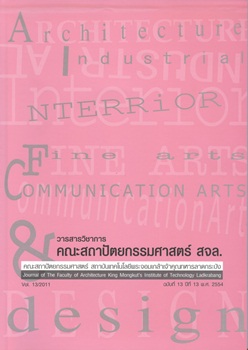ประสบการณ์การจัดรูปที่ดินในต่างประเทศ
Main Article Content
Abstract
บทดัดย่อ
การจัดรูปที่ดินเป็นเทคนิคหนึ่งที่ใช้กันในหลายๆประเทศเพื่อล'นับล'นุนการพัฒนาที่ดินให้พร้อมใช้ประโยชน์ ในกิจกรรมต่างๆ ของเมือง ญี่ปุนเป็นประเทศหนึ่งที่มีการใช้เทคนิคนี้ในการพัฒนาพื้นที่เมืองอย่างกว้างขวางและได้ถ่ายทอด ให้กับประเทศกำลังพัฒนามาเป็นเวลาหลายทศวรรษ ในบทความนี้ผู้เขียนทบทวนและวิเคราะห์เปรียบเทียบประสบการณ์ การนำการจัดรูปที่ดินไปใชในประเทศต่างๆ ได้แก่ สหพันธ์สาธารณรัฐเยอรมนี ญี่ป่น ตุรกี และเนปาล โดย 2 ประเทศแรก ถือเป็นประเทศด้นแบบในการจัดรูปที่ดิน และ 2 ประเทศหลังเป็นประเทศที่ประยุกต์หลักการการจัดรูปที่ดินไปใช้ ในส่วนแรก ประกอบด้วย ความเป็นมาในการริเริ่มการจัดรูปที่ดินในประเทศต่าง ๆ ขนาดพื้นที่โครงการจัดรูปที่ดินที่ดำเนินการแล้วเสร็จ อัตราการปีนส่วนที่ดิน และระยะเวลาในการดำเนินโครงการ เป็นด้น ต่อมาเป็นการวิเคราะห์เปรียบเทียบแนวทางการดำเนินการ จัดรูปที่ดินในประเทศต่างๆ ปัญหาและอุปสรรคจากประสบการณ์การดำเนินโครงการโดยแบ่งเป็น 5 ประเด็นหลักๆ ในส่วน สุดท้าย ผู้เขียนสรุปและเสนอแนะแนวทางการส่งเสริมการจัดรูปที่ดินให้ลัมฤทธิผลในทางปฏิบัติ มาตรการและนโยบายจูงใจ ต่อการเช้าร่วมโครงการของเจ้าของที่ดิน
คำสำคัญ: การจัดรูปที่ดิน ประสบการณ์การดำเนินโครงการ ปัญหาและอุปสรรค
ABSTRACT
Land readjustment (LR) is one of the land development techniques used in many countries to provide for developed land. While this method has been used particularly and extensively in Japan, it has been introduced and applied to many developing countries for several decades. Yet, comparisons of international experiences of LR applications have been little discussed. This article reviewed the international experiences of LR implementation in some selected countries including Germany, Japan, Turkey and Nepal. The first part outlines backgrounds in the use of LR method in their urban areas composed of project areas of LR implementation, land contribution percentage and timing of development. The second part analytically compares their project executions into three types including by individuals, associations and government agencies. Subsequently, international experiences and obstacles of LR applications are examined in five main issues. The last part provides a general conclusion and recommendations for successful implementation of LR method in Thailand.
Keywords: Land readjustment (LR), experiences of project implementation, obstacles
Article Details
This work is licensed under a Creative Commons Attribution-NonCommercial-ShareAlike 4.0 International License.
Copyright Transfer Statement
The copyright of this article is transferred to Journal of The Faculty of Architecture King Mongkut's Institute of Technology Ladkrabang with effect if and when the article is accepted for publication. The copyright transfer covers the exclusive right to reproduce and distribute the article, including reprints, translations, photographic reproductions, electronic form (offline, online) or any other reproductions of similar nature.
The author warrants that this contribution is original and that he/she has full power to make this grant. The author signs for and accepts responsibility for releasing this material on behalf of any and all co-authors.


